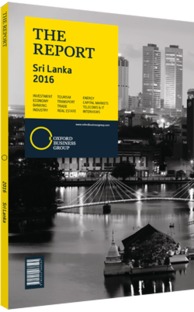Malik Samarawickrama, Minister of Development Strategies and International Trade, on cementing Sri Lanka’s hub status: Viewpoint

For investment, I believe there are developments in the overall landscape that make it timely for a big push on our part to attract foreign direct investment (FDI). Firstly, our government has embarked upon a development strategy that places a high priority on the creation of a FDI-friendly business environment. Secondly, we are currently in the process of deepening our economic relations with India and Pakistan, and negotiating a major free trade agreement (FTA) with China. This would give us preferential access to a market of almost 3bn people. Thirdly, Sri Lanka provides the most family-friendly environment for expatriates in the South Asian region.
Sri Lanka has considerable potential as a location for investment, as a hub for trade, and as an attractive destination for tourism. We are determined to take advantage of this by creating the enabling environment for a business-friendly development model. We are also focusing on empowering our people through upgrading our education, training and skills development essentials to create a human resource base that supports a competitive and rapidly modernising economy. Our vision involves the private sector serving as the engine for growth and employment creation. Exports and FDI will be key pillars of this new model for increasing growth, employment and incomes. Improving the business climate is a high priority for us. Investment policies, the ease of doing business, trade policy and trade facilitation are all receiving close attention as we seek to promote trade and investment more aggressively.
A number of one-stop shops are being established to speed up processes and procedures. Laws and regulations, as well as tariffs and para-tariffs, are being reviewed to reduce transaction costs and address anti-export biases in the policy framework we inherited. Going forward, we will also focus on strengthening our macroeconomic fundamentals, particularly budgetary outcomes. On this, we are talking to the IMF and others on strengthening our revenue base and public expenditure management. Creating a more business-friendly environment will help to fulfil Sri Lanka’s enormous potential both in terms of its location and our people.
Sri Lanka offers a highly strategic location for business. It is directly positioned on the major east–west shipping lines, equidistant from Europe and the Far East. There is also easy access to the Middle Eastern and emerging African markets. We are a mere 32 km from India, which is going to be the fastest growing large economy in the world. Improved infrastructure in both countries is reducing transaction costs and thereby increasing the advantages of proximity. The “Make in India” strategy of Indian Prime Minister Narendra Modi will create opportunities for linking into new and expanding value chains in domestic and multinational companies operating in India. To take advantage of these changes in the overall landscape, which have improved the prospects for capitalising on our proximity to India, we are planning to deepen and widen bilateral relations through the Indo-Lanka Economic and Technology Co-operation Agreement, which we plan to sign by mid-2016.
We are also in the process of deepening our FTA with Pakistan. With preferential access to both the Indian and Pakistani markets, Sri Lanka can act as a bridge for investors from both countries to penetrate each other’s markets. Indian investors, who wish to have preferential access to Central Asia can also locate in Sri Lanka and have access to those markets through Pakistan, which has a regional cooperation agreement with those countries. We are also negotiating an FTA with China, and the agreements with China, India and Pakistan will give us preferential access to a market of almost 3bn people. One could argue that this is our unique selling point. We are also exploring the possibility of signing FTAs with other countries, including Singapore and Turkey.
You have reached the limit of premium articles you can view for free.
Choose from the options below to purchase print or digital editions of our Reports. You can also purchase a website subscription giving you unlimited access to all of our Reports online for 12 months.
If you have already purchased this Report or have a website subscription, please login to continue.

